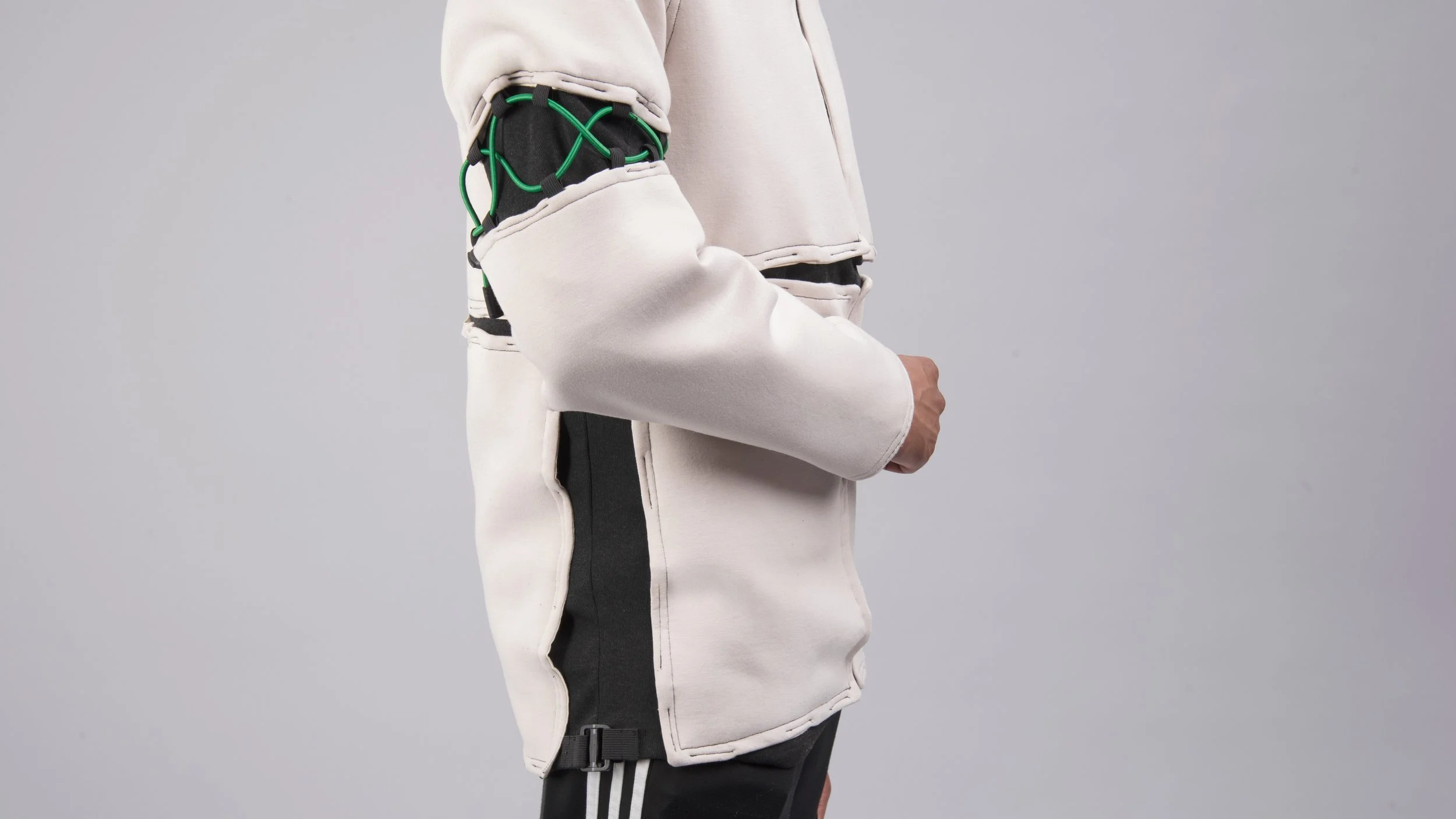
A project investigating the future of sustainability in fashion by studying advanced concepts and emerging practices in modular fashion design.
PANELS
Final Year Dissertation Project
Area of Study:
Overconsumption in the Textile Industry
This growing issue prompted my case study into factors driving overconsumption and unethical practices in the fashion industry.
My research revealed that the primary cause behind the rising levels of textile waste is the steady decline in clothing durability since the early 21st century.
Since the year 2000, clothing durablilty has decreased by 36%, which in turn has seen demand rise by over 60% since then. This current cycle of consumption is leading to a throw-away mindset, resulting in extraordinary amounts of textiles wasted.
To address this unsustainable pattern, a new approach is necessary: one that aims to restore value to these previously worn garments.
Introducing PANELS.
A product-service system offering sustainably designed modular garments, in an effort to mitigate the impacts of overconsumption on both the environment and our wardrobes.
Using modularity, the functions and appearances of multiple clothing items can be contained within one garment, effectively reducing material waste.
Intended to be worn as a garment for life by the wearer, this clothing concept serves as an effort to mitigate the impacts of overconsumption on both the environment and our wardrobes.
- Recycled from pre and post-consumer waste fabrics.
- Stitched by both machine and hand.
-
The concept was created by dividing the garment into a series of modular, interchangeable panels that are stitched onto a base layer for each section of the body to complete the garment.
Features like sleeves, hoods, collars and zip pockets would become interchangeable panels that are sewn on top of the base layer to give the garment a new style and look, depending on the wearer’s preference.
-
The synthetic threads used to sew the garment are engineered to degrade and unravel under specific heat conditions, allowing the panels to be easily removed for repairs or replacements.
-
The sweatshirt features an elasticated waistband discreetly positioned within its hem, providing the flexibility to adjust for changes in the user's weight.
Using tri-glide slider buckles, wearers can effortlessly tighten or loosen the waistband width, improving their comfort for the perfect fit.
-
An innovative window lacing system was developed to create detachable sleeves, meaning the garment could transform into either a T-shirt or a long-sleeve sweatshirt, depending on the user's preference.
This feature also allows the garment to be resized, as the sleeve length can be easily adjusted to achieve the perfect fit.
Garment Production
The garment has a base layer as a foundation, on which the modular panels for each section of the body are placed & stitched on top to complete the garment.
Synthetic heat-dissolvable threads will be used to sew panels onto the garment using traditional sewing machines.
During disassembly, the panels are exposed to temperatures reaching up to 190 °C. This controlled heat causes the synthetic threads to degrade and unravel, allowing the panels to separate from the garment without damaging the base fabric.
Impact Reduction Data.
By utilising modular design in garment construction, significant reductions in resource depletion could be achieved by using PANELS.
The innovation supports a closed-loop system for garment-to-garment recycling, effectively reducing textile waste.
Opportunities for circular material flows can also be realised with the development of panels generated from mono material and regenerative plant-based fabrics.
The Future of Fashion Design
Minimal. Affordable. Inclusive.
The goal for this project was to make accessible clothing that seamlessly integrates into any wardrobe. The minimal design served as a canvas, that could encourage others to express their individuality, using the principle of modularity to materialise the boundless possiblities available with clothing customisation.
In theory, every aspect of the garment could be altered to reflect the individual’s personal taste. From the material and texture of the fabric to the sleeve length and waistband of the sweatshirts, the individual can be given full autonomy to create a piece that is uniquely theirs.
Product-App Intergration
To ease the transition into the slow fashion lifestyle, the PANELS App has been developed. This app serves as a comprehensive platform where customers can access tailoring and modification services for their garments.
Additionally, users can connect with other community members interested in sustainability and explore marketplaces for inspiration for their next clothing alteration project.
I would love to share more about my design process with you! If you have any questions, need more information, or just want to chat about my work, feel free to connect.
Let's start a conversation.











